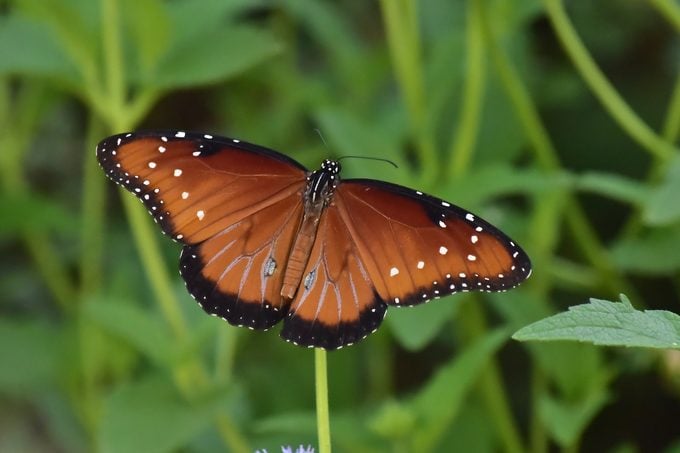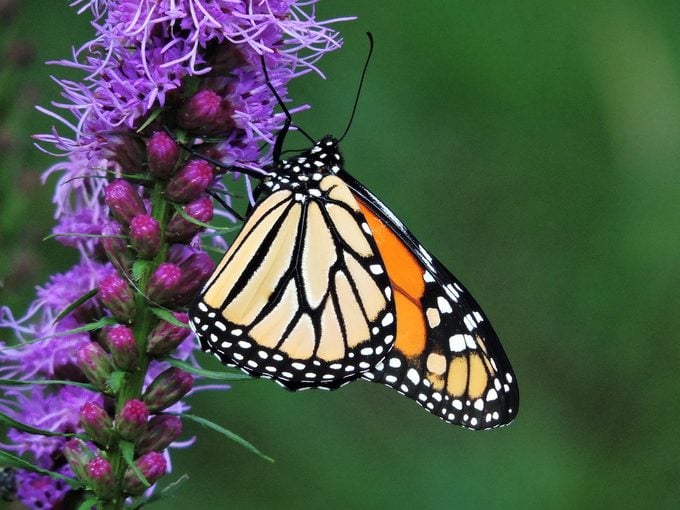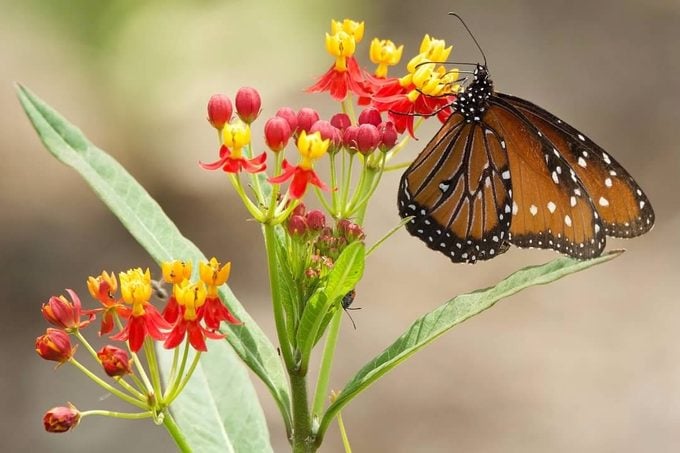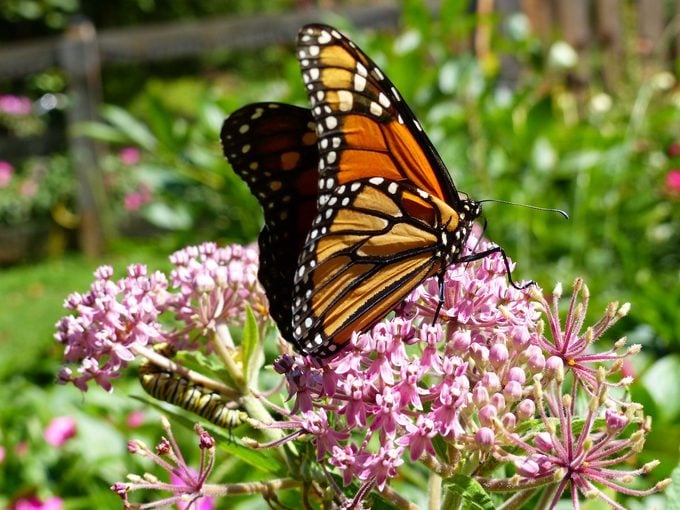Queen vs Monarch: Butterfly Mimicry
Updated: Aug. 10, 2022

Think you saw a monarch? Look again. That orange pollinator might be a butterfly mimic. See the differences between a queen vs a monarch.
Butterfly Lookalikes

Most people are familiar with the beautiful monarch butterfly (Danaus plexippus). It can be found throughout most of the country, and makes one of the most spectacular migrations in the animal world, traveling to Mexico each fall to roost in the trees until the following spring (Use this monarch migration map to track the epic journey). Butterfly gardeners faithfully plant milkweed for them each year, watching in delight as caterpillars chow down and grow up into a new generation of butterflies. Some observers are occasionally fooled, though, by a mimic. The queen butterfly (Danaus galippus) looks very similar to the monarch, especially with its wings closed, and its caterpillars also eat milkweed. Once you know a few simple tricks, though, it’s easy to tell the difference between a queen vs a monarch.
Viceroy butterfly vs monarch: How to tell the difference.
Queen vs Monarch

- Range: Monarchs have a much wider range across most parts of the United States. Queens are more common in the southern parts of the country. Though in mid-summer when the temperatures soar, you’ll occasionally find them as far north as North Dakota.
- Color: Queen butterflies are a darker, more rich orange color. Their orange forewings have white specks.
- Patterns: With their wings open, the two are easy to tell apart, since queens lack the black veining in their wings. Underwings resemble a monarch’s, with white outlines on black hindwing veins and dark borders featuring white dots.
- Wingspan: monarch, 3 1/2 to 4 3/4 inches; queen 2 1/2 to 4 inches
- Host plant: Milkweed
- Habitat: The ideal habitat for queen butterflies is open, sunny areas with flowers, including fields, deserts, roadsides and pastures. Monarchs may be found from cities to rural fields and mountain pastures. When breeding, monarchs prefer open areas.
While it can be more difficult to tell them apart with their wings closed, it’s still possible, as queens lack the black veins on their upper wings and have white spots on their lower wings. The color difference is also more pronounced.
Do monarch butterfly sightings have meaning?
Queen vs Monarch Caterpillars
Queen butterfly caterpillars have black and white stripes and yellow accents, much like monarch caterpillars. But queens have an extra pair of black spikes (tubercles) along the middle of their bodies. Queens have three sets and monarchs have only two. In the photo above, the queen is on the left and the monarch on the right. Their chrysalis are almost identical, although queens tend to be smaller and paler in color.
Raising monarch butterflies: Here’s what you need to know.
Why the Similarities?

Mimicry is common in the animal world. Kristen Gilpin, curator of the BioWorks Butterfly Garden Exhibit at the Museum of Science and Industry in Tampa, Florida, explains. “We can see a case of mimicry among the monarch and queen butterflies,” she says. “Both species consume milkweed and sequester toxins from the plants in their bodies, making them both distasteful to predators such as birds. Both species utilize warning coloration of bright orange and red tones that generally warn of toxic qualities in prey. These butterflies resemble each other so strongly that they are often misidentified by people.”
Is that a yellow monarch butterfly in your yard?
Kristen adds, “A bird that tastes a monarch will learn and remember that the bright orange coloration and pattern of decoration on a monarch butterfly is a signal of the unpalatability. A queen butterfly flying past later will likely be viewed as ‘not food’ since it bears such a striking resemblance to a creature which tasted very bad to the bird. (See more butterflies that look like monarchs). Thus the two species gain an advantage against predators by each offering the same bad taste to the predators and reinforcing that bad taste with a very similar appearance.”
Are monarch butterflies endangered?

In other words, both butterflies taste bad and may even be toxic. The same applies to the caterpillars. They look alike, so once a bird tries to eat one of the species, they’ll be likely to avoid both in the future. To learn more about mimicry, read Kristen’s entire article.
Next, discover the best monarch butterfly flowers you should grow.




















